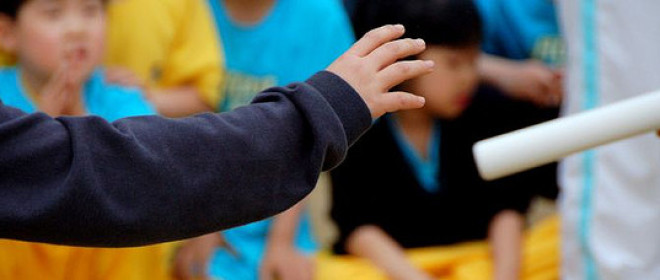
Teacher readiness series #2
I’m not nearly as concerned about student readiness for school as I am about teacher readiness. Throughout the instructional day, students are going to be expected to let go of what they are currently doing and start something new. This can be more difficult for some students than others. At any given moment students can vary widely in their readiness to do something different. Who can most effectively bring the students to a similar learning readiness state when transitions are needed? As you might have guessed, it’s not the students, it’s the teacher.
Isn’t it obvious the teacher needs to provide the transition? It seems obvious, but often we make statements that assume the students are primarily responsible. “All right class settle down, we’ve got to complete this reading lesson” puts the transition heavy lifting on your students. What you are asking is for each student to assess their own internal state, evaluate what is causing their current behavior, understand how that differs from what you expect for reading readiness, and make the behavioral change. Sometimes we as adults have a difficult time assessing our own state of mind and making a change, how much more a classroom of students.
One obstacle we pointed out in our last article is that working memory only has a few slots. If those slots are full, the students will have a harder time hearing you. If they are especially interested in the current task, or if developmentally they struggle with transitions, you are going to have very difficult time “telling them to transition.”
It is far better to teach them transition routines as early in the school year as possible. A transition routine includes at least some of the following:
- Always provide a heads up that a transition is coming, and teach your students a sense of time. This may mean that you will need a visually oriented timer in front of the room, and you use it to help students monitor the time period when you say, “We need to finish up in the next two minutes.” Repeat the heads up that a transition is coming. I guarantee some students will miss the first heads up!
- Provide a consistent signal that the time has ended. This can be using a consistent statement, but even better how about ringing a bell, blowing a whistle, or some other unique and consistent signal.
- Teach them from day one what you want when they hear this signal. Do crayons go back in their box? Work papers get taken to the basket? Where does scrap paper get thrown away? Do they make a check mark on a record sheet? Tell them and demonstrate the expected behaviors, then be in the habit of pointing out who is doing exactly what you want and thanking them for being a good example.
- Remember that what is inspected gets done, not what is expected. Go around the room assessing progress and helping those who are slow to transition. Be aware of signs that a child is struggling, and approach them in a soft and supportive way, giving reasons why it is fun and necessary to move to the next item (see note on individual transitions below).
- After the transitional chores are finished, provide a second cue and have an active routine that they perform at that cue. Stretch to the right, stretch to the left, reach up high then sit down. If they need more transition help, try meeting at the gathering spot and singing a song after which they return and sit down at their desks. Have a number of movement/music oriented routines that you can use, which are familiar and help them leave what they are doing to get ready for a new task.
One very important idea to keep in mind, is that at times it may only be a single student that needs the transitional help. Teach routines that can be applied to the individual. Is there a privileged task that needs to be done? “Conor, today I need help organizing the game box.” “Courtney, I need a paper collector. It’s okay to stop right there today and help me.” The key in individual transition routines is to recognize the early signs of a particular student’s struggle or melt down process and intervene with a familiar transitional routine for that individual student.
Current research is hinting that laughter may have the unique ability to free up working memory and allow those slots to be refilled. You should have some fun transitional routines that bring happiness/laughter into the room. In my wife’s kindergarten class, she has a special dance that the students only see occasionally and the dance ends with a hand signal that tells them it’s time to quiet down. Their laughter frees their mind from what they were doing before, and those working memory slots are available for a new task.
Keep in mind that your students, no matter how old they are, only have a limited number of working memory slots. Use routines to help them transition from the task you’ve been asking them to do, to the new task that you want them to begin.
